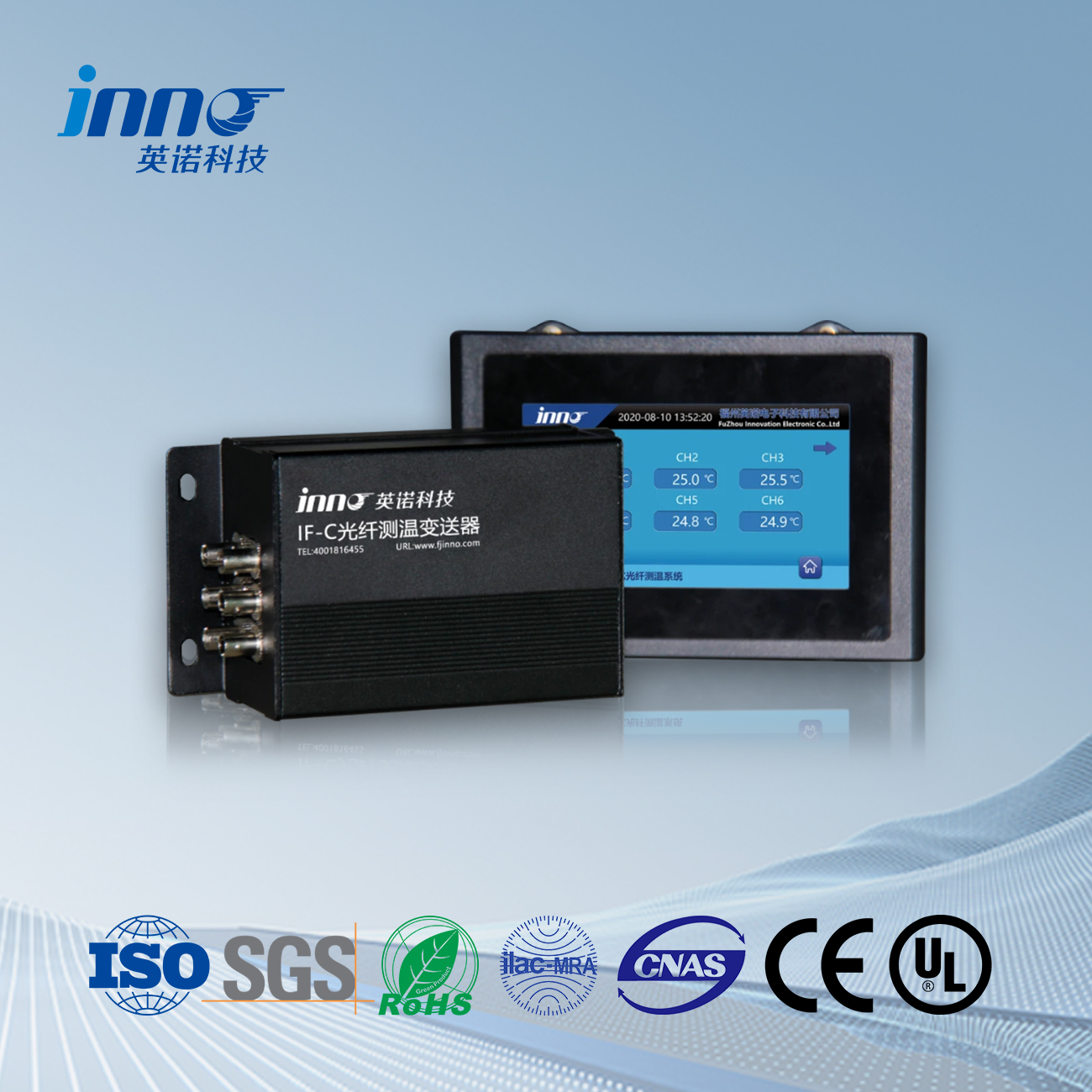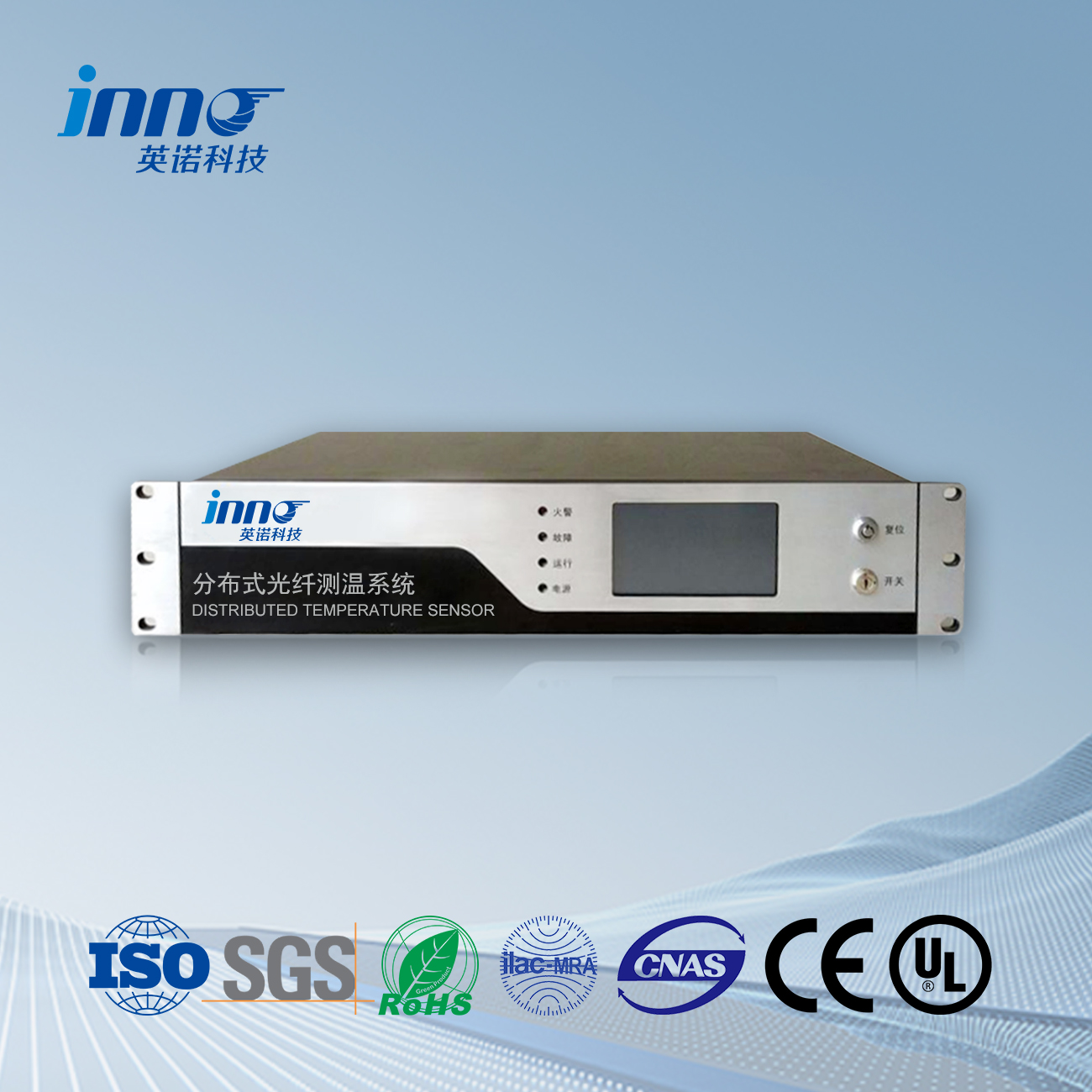The full name of fiber optic temperature measurement is fiber optic temperature measurement, which can be mainly used in power equipment. It provides fluorescence fiber optic temperature measurement, distributed fiber optic temperature measurement, and fiber Bragg grating temperature measurement. He kūpono ke kumukūʻai, please feel free to contact us.
ʻO ka distributed fiber optic temperature sensing system can continuously measure the temperature along the fiber optic cable, with a measurement distance of several thousand meters and a spatial positioning accuracy of meters. It can perform uninterrupted automatic measurement and is particularly suitable for applications that require large-scale measurement. The traditional method for measuring temperature in distributed fiber optic temperature sensing systems is to use Stokes light to demodulate anti Stokes light, that is, to obtain the intensity ratio of anti Stokes light to Stokes light, and then compensate for the attenuation of the intensity ratio signal.
Distributed fiber optic temperature measurement technology is widely used in temperature measurement and monitoring in hazardous areas, important areas, pressure vessel surface temperature measurement and monitoring, large-scale and large-scale temperature measurement and monitoring, as well as temperature measurement and monitoring in the transportation field. Distributed fiber optic temperature measurement is widely used in temperature monitoring and fire alarm of facilities such as power, petrochemical, transportation, hale hale, and water conservancy;
Pūnaehana ana ana wela o ka fiber optic parameters
Measurement distance: 0-16km (industry-leading)
Measurement time: 2s/channel (industry-leading)
Temperature measurement accuracy: ± 0.5 ℃ (full range)
Temperature resolution: 0.1 ℃
Number of channels: 1-8 (koho)
Temperature measurement range: -40 ℃~85 ℃ (conventional optical fiber):
-40 ℃~250 ℃ (special optical fiber)
Sampling interval of 0.4m, 0.8m (industry best)
Spatial resolution: 1m, 2m, 3m
Positioning accuracy: 1m
Distributed fiber optic temperature measurement host interface:
Fiber optic connector: FC/APC
Communication interface: Ethernet, USB, RS232
Relay: 16 temperature alarms, 2 system faults
Working conditions of distributed fiber optic temperature measurement host
Hana wela: -10 ℃~60 ℃
ʻO ka haʻahaʻa hana: 0-95% R H
ʻAʻohe condensation
lako mana hana: DC 24V, AC
220V (koho)
IP level: IP50
Characteristics of Distributed Fiber Optic Temperature Measurement Products
Hiki iā ia ke loaʻa mau ka ʻike ana ma ke kelepona optical detection no ʻumi mau kilomita, with low false alarm and false alarm rates, a hiki ke hoʻokō i ka nānā ʻana i ka manawa maoli. Ka hoʻohana mana haʻahaʻa loa, host power consumption less than 15W, hoʻolālā pāʻani ʻole. Hoʻopilikia i ka electromagnetic, hiki ke hana maʻamau i nā wahi electromagnetic kiʻekiʻe. mamao ana lōʻihi, kūpono no ka nānā mamao. Equipped with GPRS SMS alarm function, no need for manual monitoring. Support multiple fire alarm methods including early warning, ʻokoʻa wela, and fixed temperature. Hiki ke hoʻonohonoho pono ʻia nā ʻāpana hoʻāla a me nā wela hoʻāla. Ola lōʻihi, kumu kūʻai haʻahaʻa, a me ka ʻōnaehana maʻalahi.
Distributed fiber optic temperature measurement application field
Fire monitoring and alarm in tunnels, nā alaloa, a me na alanui, as well as monitoring leaks in oil and gas transmission pipelines or storage tanks,
Temperature monitoring and fault point detection of oil depots, oil pipes, a me na pahu aila, surface temperature detection and fault point positioning of power cables, ka nānā ʻana i ke ahi o nā tunnel uwea a me nā interlayers, temperature monitoring of power plants and substations, fault point detection and fire alarm, leakage of dams and embankments, and concrete solidification and maintenance temperature of dams, embankments, and bridges.
ʻIke wela optic, Pūnaehana nānā naʻauao, Hāʻawi ʻia ka mea hana fiber optic ma Kina
 |
 |
 |
 INNO nā mea ʻike wela optic ,ʻōnaehana nānā wela.
INNO nā mea ʻike wela optic ,ʻōnaehana nānā wela.
